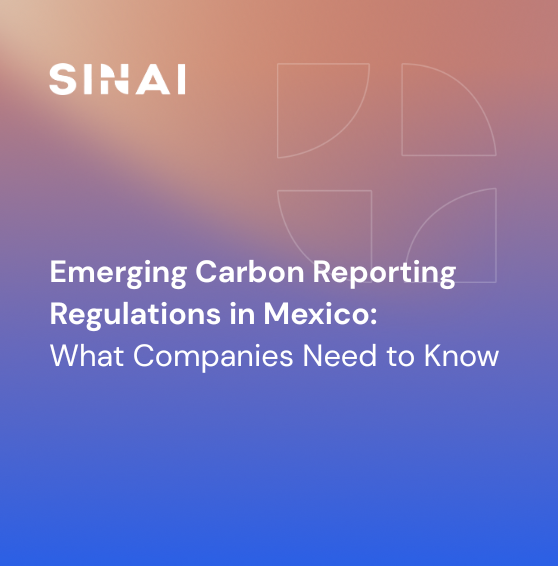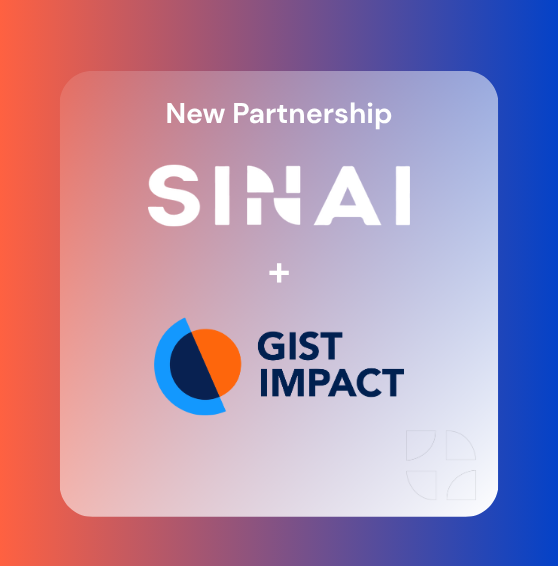
What You Need To Know About Carbon Finance
Carbon financing refers to funding mechanisms that puts a monetary amount on carbon emissions, allowing, for example, companies wishing to offset their GHG emissions to buy carbon credits earned from sustainable organizations and their projects.
This provides vital funding for innovative projects that make sustainable energy solutions a reality, including for the benefit of those living in developing countries worldwide. Your business can compensate for your remaining GHG emissions that cost too much to be reduced internally by partnering with respected and renowned providers, like the American Carbon Registry, Gold Standard, The Nature Conservancy, and Verra, plus many more.
In this article, the GHG emissions management experts at SINAI define carbon finance and the carbon markets that exist to support carbon financing. We also explain how you can combine climate finance methodologies to better manage your firm’s GHG emissions reductions.
What is carbon finance?

Carbon credits are used by businesses to compensate for their carbon emissions by either sticking to their emission allowances or providing funding for sustainable projects. This is commonly completed through an exchange, referred to as carbon financing, which takes the form of a yearly payment to your company’s project partner, be it private, public, NGO, or another entity, for the GHG emission reductions created once the project is fully operational.
Carbon financing boosts the financial viability of cutting-edge projects, generating an added revenue stream and allowing for the effective transfer of technologies, knowledge, and expertise. It provides a means of leveraging new public and private investment in projects to reduce greenhouse gas emissions globally, including in economies in transition and developing countries.
Carbon markets
A carbon market allows for the buying and selling of carbon credits. Under a regulated limit or cap, carbon emissions, allowances, or permits are provided or auctioned off to carbon emitters.
Corporations or countries that manage to emit below their cap are then allowed to trade their extra allowances - their carbon credits - with those who need additional capacity, which creates a market to buy and sell carbon credits.
For example, suppose a company wants to emit more carbon emissions than it has been permitted to. In that case, the company can purchase credits from those who have reduced their emissions below their target level or from a project in a developing country that has certified emission reductions credit (CER) to sell.
The currency of carbon markets are emission reductions certificates (ERCs) or carbon credits.
The Clean Development Mechanism
The Clean Development Mechanism (CDM) of the United Nations Framework Convention on Climate Change (UNFCCC) is one of the flexible mechanisms available as outlined in the Kyoto Protocol.
The CDM’s goal is to reduce the amount of GHG emissions in our atmosphere in the most cost-effective way possible. It allows developed nations to use CERs created from sustainable development projects in developing countries to reach part of their emission reduction (ER) goals under the Kyoto Protocol. In exchange, developing countries receive investments and funding in clean technology and revenues from the sale of their ERs once projects are delivered and have generated GHG emissions reductions.
What’s a CER?
A Certified Emissions Reduction, or a CER, is a certificate provided by the United Nations to member nations for averting one tonne of CO2 emissions.
CERs are commonly issued to member states for projects that achieve GHG emissions reductions through using Clean Development Mechanisms (CDMs). CDMs provide vital investment for cutting-edge projects to get off the ground and establish a baseline for future emission reduction targets.
Countries with traditional or developed economies (as defined in the Kyoto Protocol) use CERs to help them reach their emission goals. Those countries are able to reach their targets and are able to set future goals as it makes the endeavor of reducing GHG emissions more achievable.
The World Bank Carbon Finance Unit
The World Bank’s carbon finance initiatives have backed projects in over 65 countries and have secured 2 billion dollars in Emission Reduction payments since the creation of the first carbon fund, which launched in 1999.
Their support of climate finance initiatives that deliver next-generation and scalable environmental and climate action has allowed for more than $5 billion to be directed to:
- Partnerships that develop new financial instruments for climate-resilient, low-carbon development.
- Supportive regulatory and policy environments that help lower the cost of and dismantle barriers to innovative projects.
- Act as a catalyst for accessing private sector capital to finance and scale up climate action.
The Unit also includes environment and climate change programs provided through the World Bank together with the Pilot Program for Climate Resilience (PPRC) and the Green Climate Fund.
Combining climate finance methodologies to manage emissions reductions
SINAI has built dynamic scenario assessment tools that make it hassle-free to automate your firm’s GHG emissions calculations. Our software solution can be introduced and immediately support your company at whatever stage in its emissions management journey it finds itself.
We make it straightforward for your company to measure, analyze, price and, reduce your CO2 emissions, helping your firm stay on track towards achieving your long-term recarbonization goals.
SINAI’s platform is different from other emissions management products on the market. It allows you to build an internal carbon price to combine your firm’s environmental impact and make sense out of complex, rich data. Ask for a demo of our software today and see how SINAI can help your firm work towards net-zero emissions.











